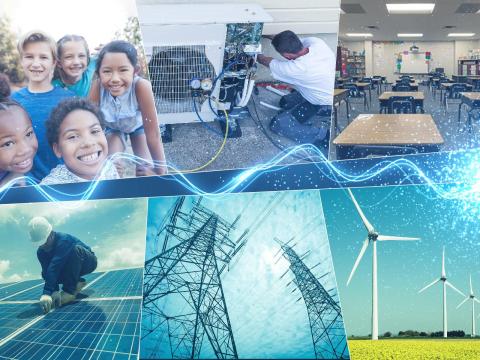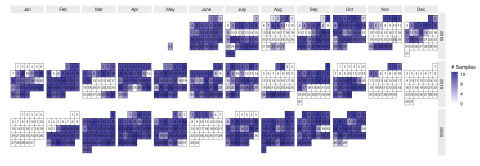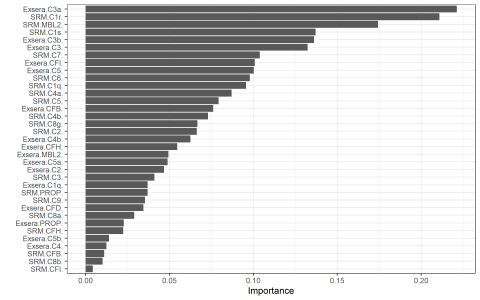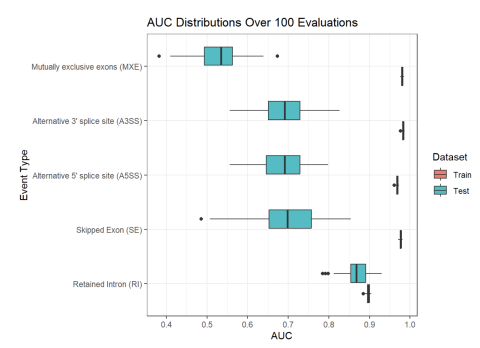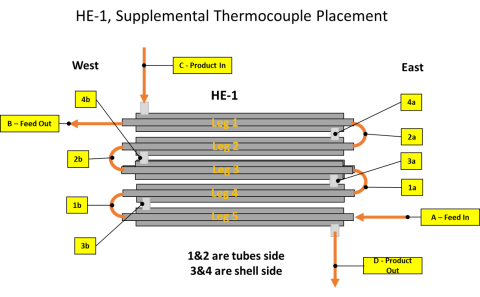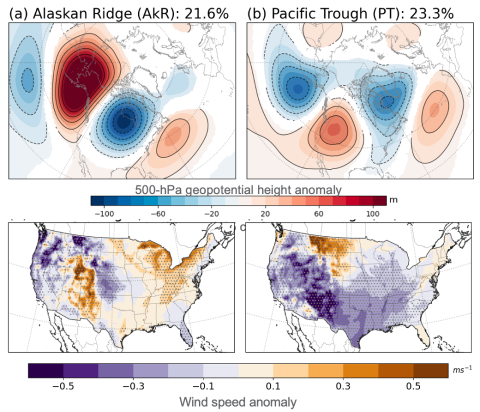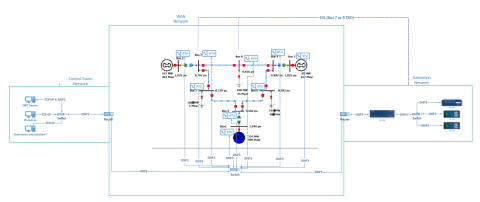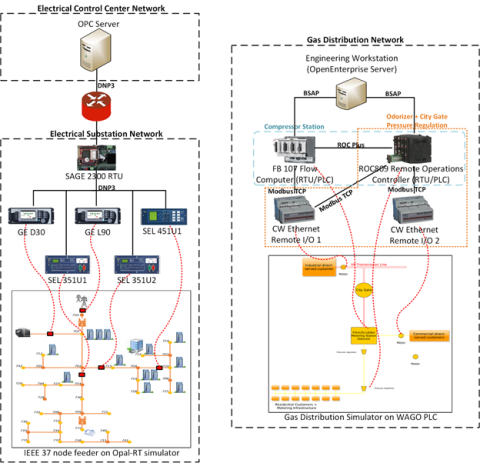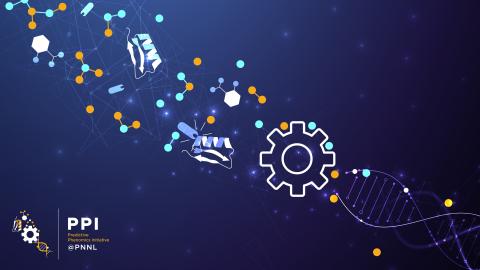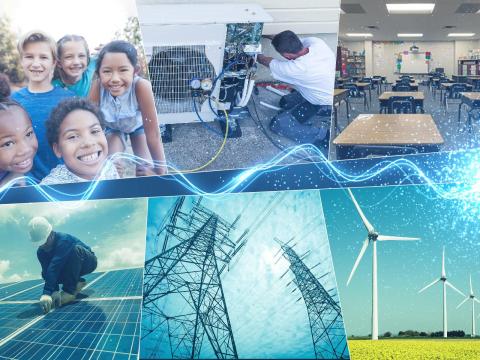Energy insecurity affects most low-income households in the United States. Energy insecurity, which is characterized by a household’s inability to afford their energy needs, often leads to risky choices, causing other forms of insecurity including food and health. Although there are government...
Filter results
Category
- (-) Energy Resiliency (13)
- (-) Data Analytics & Machine Learning (9)
- Scientific Discovery (376)
- Biology (260)
- Earth System Science (164)
- Human Health (112)
- Integrative Omics (73)
- Microbiome Science (47)
- National Security (32)
- Computational Research (25)
- Computing & Analytics (18)
- Chemical & Biological Signatures Science (12)
- Weapons of Mass Effect (12)
- Materials Science (11)
- Chemistry (10)
- Computational Mathematics & Statistics (7)
- Data Analytics & Machine Learning (7)
- Renewable Energy (7)
- Atmospheric Science (6)
- Visual Analytics (6)
- Ecosystem Science (5)
- Coastal Science (4)
- Energy Storage (4)
- Solar Energy (4)
- Bioenergy Technologies (3)
- Energy Efficiency (3)
- Plant Science (3)
- Transportation (3)
- Cybersecurity (2)
- Distribution (2)
- Electric Grid Modernization (2)
- Grid Cybersecurity (2)
- Wind Energy (2)
- Advanced Lighting (1)
- Computational Mathematics & Statistics (1)
- Environmental Management (1)
- Federal Buildings (1)
- Geothermal Energy (1)
- Grid Analytics (1)
- Grid Energy Storage (1)
- High-Performance Computing (1)
- Subsurface Science (1)
- Terrestrial Aquatics (1)
- Vehicle Technologies (1)
- Waste Processing (1)
- Water Power (1)
Content type
Tags
- Type 1 Diabetes (6)
- Autoimmunity (5)
- Machine Learning (5)
- Biomarkers (4)
- Molecular Profiling (4)
- Energy Equity (3)
- Energy Storage (3)
- Mass spectrometry-based Omics (3)
- Predictive Modeling (3)
- Alternative Splicing (2)
- Cybersecurity (2)
- Electrical energy (2)
- Heat Exchanger (2)
- Hydrothermal Liquefaction (2)
- Biological Systems (1)
- dynamic LCA (1)
- Energy Burden (1)
- Energy Justice (1)
- HTL MHTLS (1)
- hydrothermal processing (1)
- life cycle costing (1)
- multi-criteria decision making (1)
- Multi-Omics (1)
- Phenomics (1)
- Renewable Energy (1)
- Solar Energy (1)
- Solar photovoltaics (1)
- temperature (1)
- Weatherization (1)
- Wet Waste (1)
Please cite as : Schmidt A.J. 2023. MHTLS Cross-flow Heat Exchanger Temperature Performance Data. [Data Set] PNNL DataHub. 10.25584/2476481 The presentation and supporting information provide data on the performance of an engineering-scale cross-flow heat exchanger used in hydrothermal liquefaction...
Category
Comprised of 6,426 sample runs, The Environmental Determinants of Diabetes in the Young (TEDDY) proteomics validation study constitutes one of the largest targeted proteomics studies in the literature to date. Making quality control (QC) and donor sample data available to researchers aligns with...
Federal and state decarbonization goals have led to numerous financial incentives and policies designed to increase access and adoption of renewable energy systems. In combination with the declining cost of both solar photovoltaic and battery energy storage systems and rising electric utility rates...
Category
As energy prices rise and climate change brings more extreme and frequent days of heating and cooling, households must allocate more of their income to energy bills, increasing their energy burden. Many strategies are employed to alleviate high energy burden, such as weatherization, energy...
Category
A total of 172 children from the DAISY study with multiple plasma samples collected over time, with up to 23 years of follow-up, were characterized via proteomics analysis. Of the children there were 40 controls and 132 cases. All 132 cases had measurements across time relative to IA. Sampling was...
Inclusion levels of alternative splicing (AS) events of five different varieties (i.e. skipped exon (SE), retained intron (RI), alternative 5’ splice site (A5SS), alternative 3’ splice site (A3SS), and mutually exclusive exons (MXE)) were measured in human blood samples from two separate cohorts of...
The presentation and supporting information provide data on the performance of an engineering-scale cross-flow heat exchanger used in hydrothermal liquefaction (HTL). Temperature profiles are provide for the process of waste water treatment sludges and a food waste. The data can be used to model...
Category
Supporting data and code uploaded to DataHub for "How do the weather regimes drive wind speed and power production at the sub-seasonal to seasonal timescales over the CONUS?" Created by Ye Liu*, Sha Feng*, Yun Qian, Berg K Larry, Huilin Huang *POC: Ye Liu, Ye.Liu@pnnl.gov Sha Feng, sfeng@pnnl.gov --...
Category
This dataset includes one baseline and three cybersecurity based scenarios utilizing the IEEE 9 Bus Model. This instantiation of the IEEE 9 model was built utilizing the OpalRT Simulator ePhasorsim module, with Bus 7 represented by hardware in the loop (HiL). The HiL was represented by two SEL351s...
This dataset includes the results of high-fidelity, hardware in the loop experimentation on simulated models of representative electric and natural gas distribution systems with real cyber attack test cases. Such datasets are extremely important not only in understanding the system behavior during...
Category
Current methods for life cycle inventory (LCI) data often require significant time and effort from manufacturers to compile. Additionally, without a uniform methodology these can result in inconsistent datasets that are difficult for practitioners to evaluate and compare, even within similar product...
Category
Datasets
2
Predictive Phenomics Initiative (PPI) Project Data Catalog Collection The Predictive Phenomics Initiative (PPI) is an internal LDRD investment at Pacific Northwest National Laboratory focused on unraveling the mysteries of molecular function in complex biological systems. Explore PPI research...
Category
Datasets
18
PNNL’s Vision Statement for Equity in the Power Grid Drawing from a wealth of interdisciplinary research in grid modernization, PNNL is spearheading an effort to advance equity and energy justice through the role of scientific research with the goal of building an advanced national power grid...
Datasets
2

